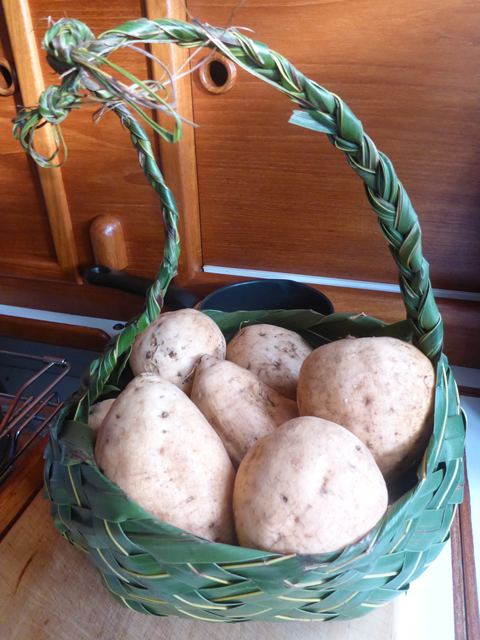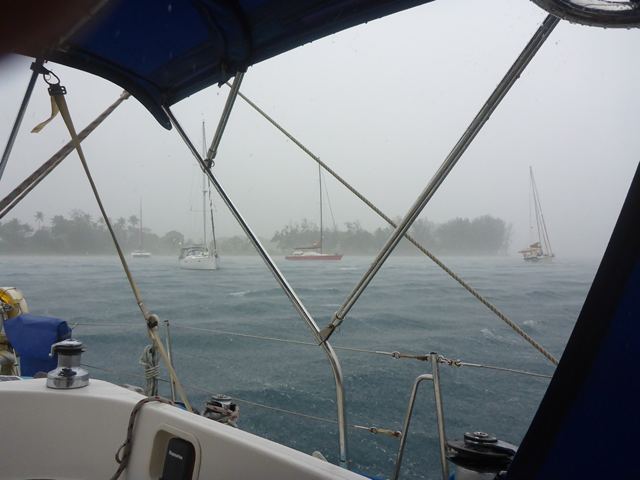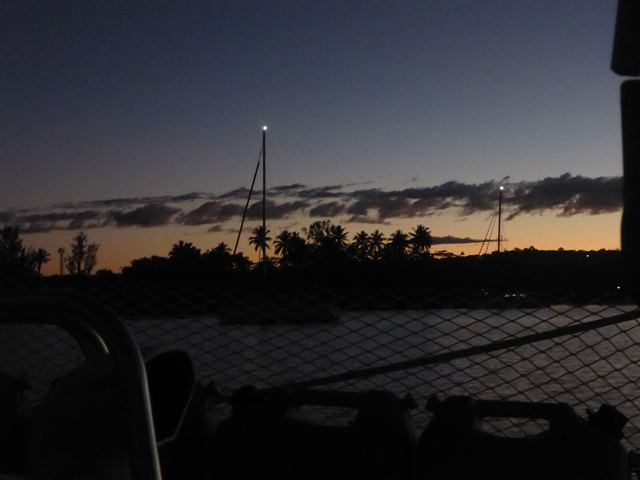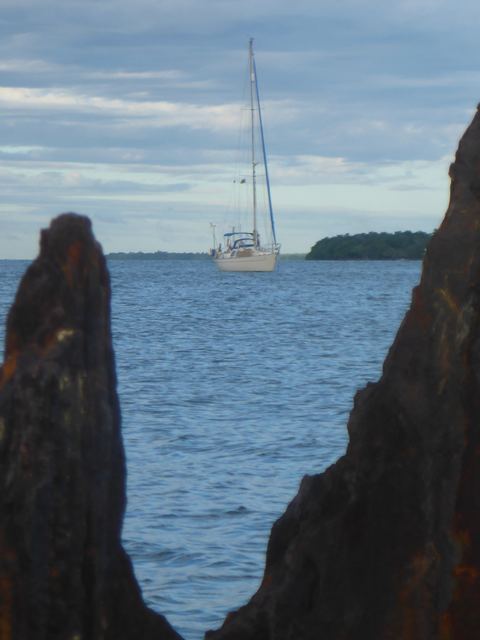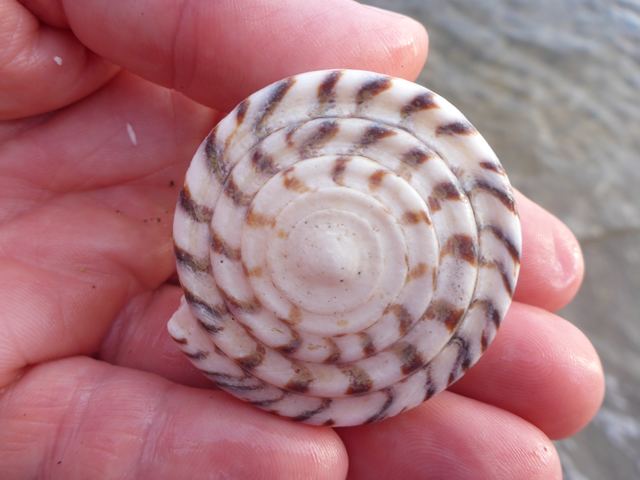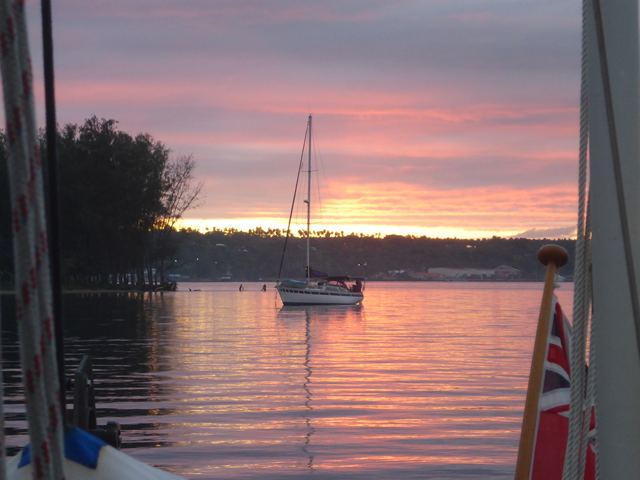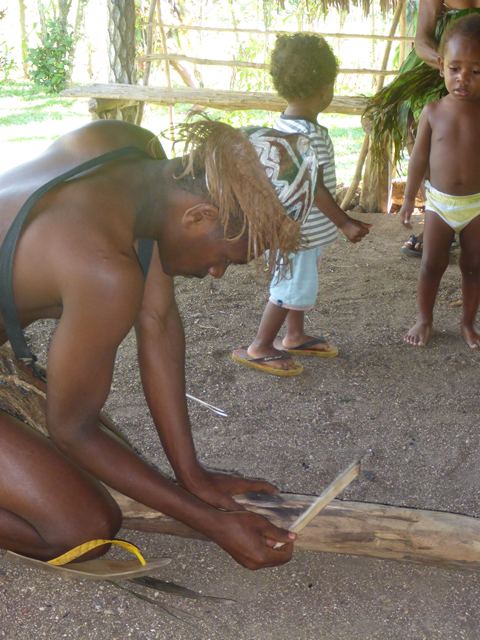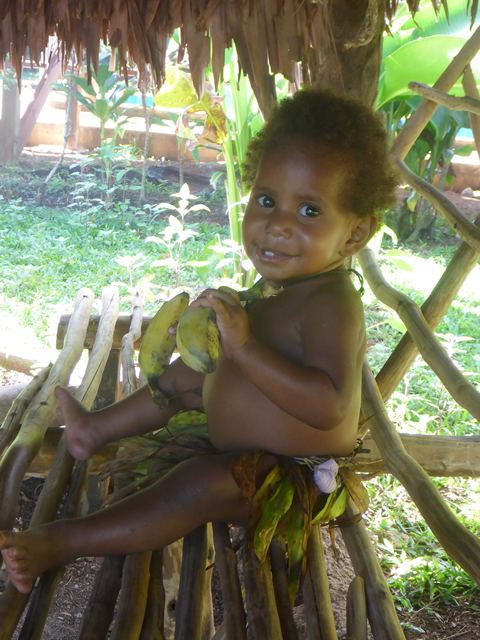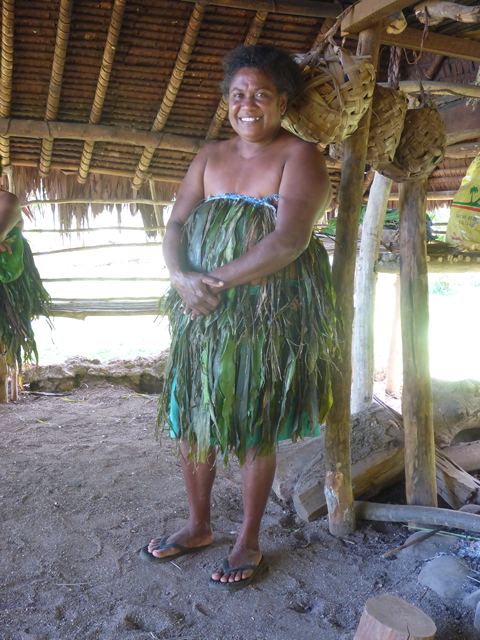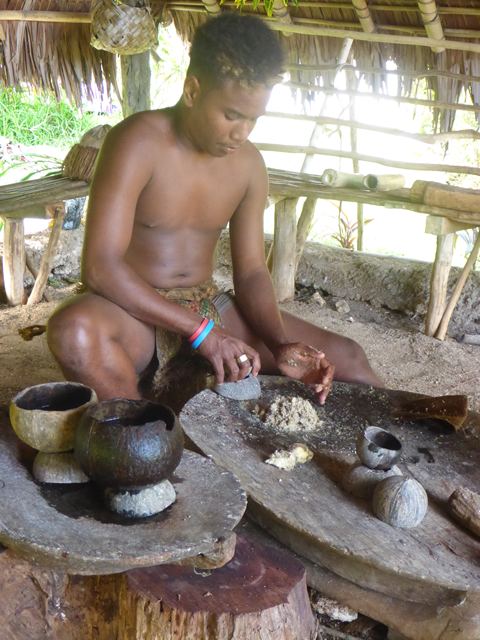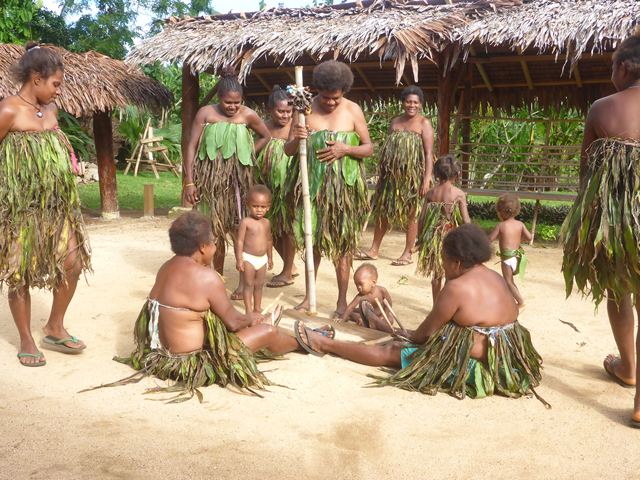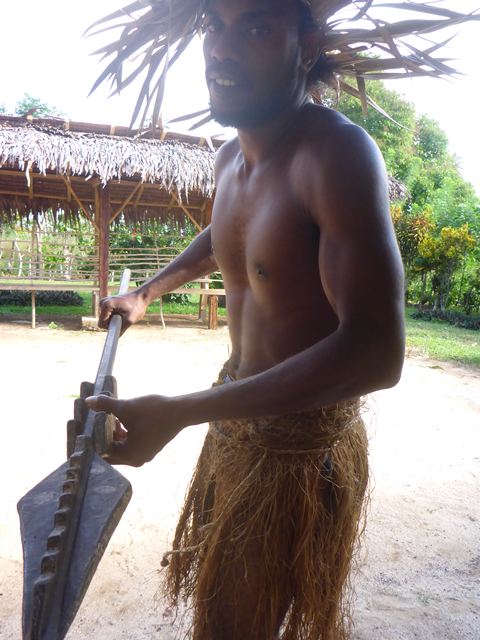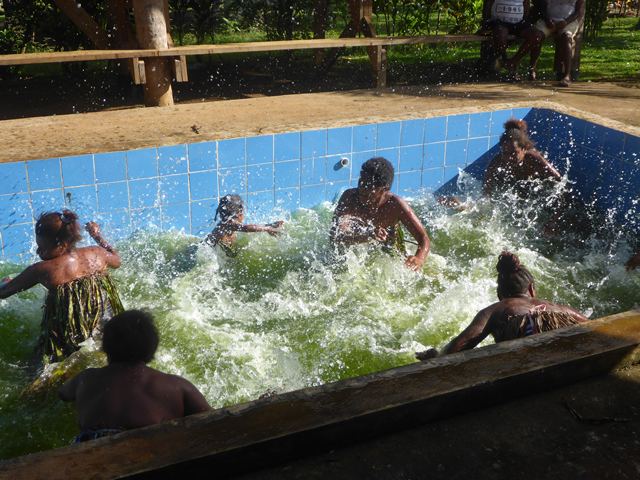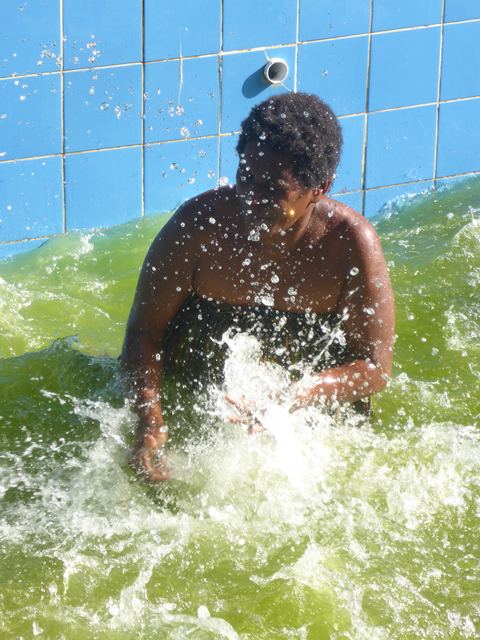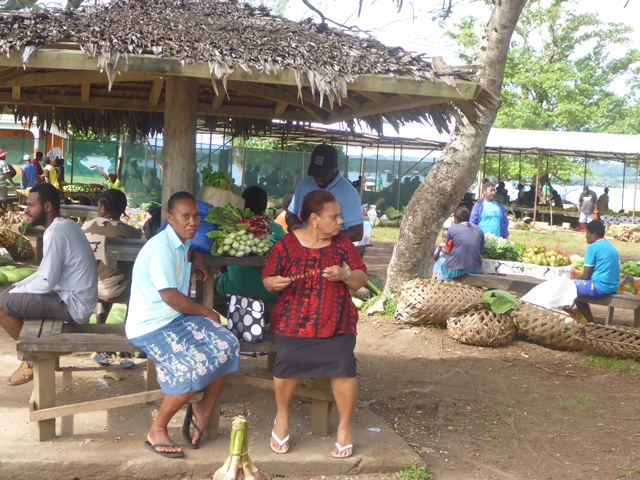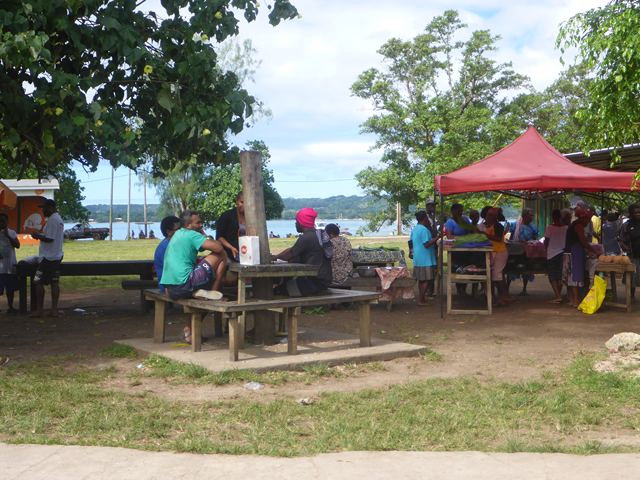A Dragging Yacht and the People from Mere Lava Island

Zoonie
Fri 5 Jul 2019 01:41
Our weather forecast told us to expect a wet and windy day the next day so as soon as our morning chores were done we went ashore, caught a bus to town and shopped at LCM for eggs and rice and booked our culture trip to Leweton Village, then wandered to the market where some fresh white kumara, cucumber and bananas filled our cotton bags.
Back at the resort and over a welcome cold beer we chatted on Facetime with Rob’s sister Sue who is going through the difficult process of living without her husband Bernard who died recently.
In the evening we started watching Deadwood about the folk in the lawless gold rush town in the Black Hills of South Dakota in the 1870’s with famous characters like Wild Bill Hickok and Calamity Jane taking lead roles. A beautifully scripted and well-acted window on the psyche of the people of those dangerous times. One hundred years later in 1976 hubby Stuart and I passed through the area and visited the site of the Battle of The Little Big Horn where General George Armstrong Custer of the US army fought and died at his last stand.
Early the next morning, around 8.30am a mighty and sudden gust of 29 knots hit our little fleet of nine anchored yachts bringing with it a mantle of rain and wind which lasted for the best part of the day. Rob was making his way to the companionway for a look out when he saw the 47’ Beneteau, that had anchored uncomfortably close the evening before shoot backwards past us just a few metres away dragging his anchor. Alarmed and relieved at the same time I grabbed the foghorn and gave him a good blast with the hope of getting him on deck at least. Whether he heard it or not I do not know but eventually he appeared, his vessel having found a new location this time very close to two others boats.
He was the only one to leave his tender in the water the night before and we wondered if he even knew the blow was due, even knew when he started dragging, even knew he was aboard a yacht anchored off Espiritu Santo! He didn’t emerge onto the foredeck to check the anchor and chain and we were not sorry when he left the next morning. If he had hit us the potential damage does not bear thinking about.
The wind eased by the afternoon and we benefited from the 100% battery charge Ruby the Rutland wind charger had given us but as the rain continued for a few more hours when it did clear Zoonie shone in the next sunlight from her thorough wash off.
By contrast that night was blissfully calm and the mast head anchor light of another yacht sometimes found its way through our cabin porthole and through my eyelid into my dreams. The gentlest cool breeze would come over us and we awoke to the smell of woodsmoke and sodden earth and the usual barking of dogs and cocks crowing.
Our taxi driver that day was a friendly and curious chap, just as well because we had four 20 litre diesel cans to fill and things got a little complicated. We exchanged questions freely and I discovered that it is the local council of residents who decide on the taxi fares and at present 200 vatu in to town was thought to be reasonable and 300 was too much. Also they learn to drive from their friends and family and buy their permits to drive and their licences to be taxis from the authorities! He complained that he pays his taxis but doesn’t know where the money goes, “Certainly not on the roads!”
We filled the cans with fuel at 154 vatu a litre (£1.1 about the same as UK) but then found our question on whether the garage took cards must have been misunderstood. So the driver then took us in to the nearest ATM (BSP Bank of South Pacific – cheapest fees) to get some more cash with the cans in the boot, they’re very trusting here, and then back to said garage to pay and on to the resort, all with friendly good humour.
While decanting the fuel in to Zoonie’s tanks Rob spotted a Dugong, a sea cow similar to a Manatee but with a whale like fluke unlike the manatees spade tail. He wasn’t the only one we saw either as you will see later. They are very discreet about surfacing every five minutes or so to breathe. First he appeared to poke his nose above water to exhale, then he swims along with his back just breaking the surface, then takes a couple of breaths, arches his back and dives, his fluke just curving over above water level in a liquid smooth dive.
We had been keenly anticipating our visit to the Leweton Village the next day. Lily and her driver were due to collect us in their van at 1.30pm so knowing our time here was coming to an end we had a nice walk along the beach where the locals were fishing and swimming and the now well rusted US forces landing stages were a constant reminder of their presence. Swallows by the hundred ducked and dived all day long, maybe they are helping keep the mosquito population at bay because since arriving we have not seen a single one, despite our taking daily anti-malaria tablets!
The village, or compound, as Celia called it is not big enough to grow any vegetables to eat but the community members might well have their own vegetable gardens around their huts which are outside the compound. Either way they like to go into town to the market and to buy staples like rice. I wondered if that is another reason they came to Espiritu Santo, to get away from their isolated existence.
The area we visited is made up of an arena with shaded seating, what used to be mutually exclusive mens’ and womens’ communal huts, on our visit a young man came into the ladies hut to give a fire lighting demonstration, and a swimming pool for the water music demonstration all set in neat gardens.
Celia (standing in front of her fire) came from Mere Lava Island (Big Child), in the Banks Group to the north 28 years ago “The hospitals and schools meant we could give our children a better life, and there is a better choice of food.” She said as she handed us some freshly grated coconut and tasty roasted plantain. But in exchange they gave up their longevity. Two sisters sitting opposite us in the womens’ hut were sixty one and sixty five (the eldest) and their father was still thriving at 102 years, in the past it was common for the people to live up to 105 or even 110 years of age. “Because he has never eaten processed food or drunk alcohol. Today our people are dying at a younger age.”
Today when their education in English as well as their own language and other subjects is complete many of the young people in her village work in and around the town, often the men come home for supper and then go to one of the many kava bars for a drink in the evening; that sounded a little like we used to do, going to The Grainstore Pub every Friday to celebrate the end of the working week. But in the past her people used to only drink kava during ceremonies as part of their tradition and not as a leisure beverage.
In the men’s hut we watched the young chief making kava from fresh root grated with a limestone from the shore. He squeezed the liquid from the grated root into a cup and then strained it three times through coconut husk matting before diluting it with fresh water, I wondered if he always did the last part as undiluted it would have a stunning effect on the drinker. It had a fresher flavour compared to Fijian kava which is dried before the mixing begins. A small number of the young men were part of the experience and Lily was grateful we had given them notice of our visit so she could make sure there were enough present and they weren’t elsewhere, possibly working.
She led us back to the arena with her youngest of five children and the other pre-school youngsters who loved to take part in the lively dancing by first the women, with us joining in and then the young men armed with spears; carrying on the traditions was in safe hands here!
Last in the bag of cultural delights was the Traditional Vanuatu Water Music. Cupped hands gave a resonant beat and splayed fingers through the water a liquid moan like rubbing a wet finger on a shiny surface. Then of course there was the slapping and splashing all used to tell the stories of cascading waterfalls, rain on the roof, thunder, water rippling over pebbles and boiling water. Using water as a percussion instrument, like a military drum was as novel to us as it was refreshing to the ladies. Water is all important to these people, “Without water Peace and Unity cannot exist. Water is life.” I’m not sure who Sandy Sur is or was but I concur with her sentiments.
Our visit concluded with the ladies singing a farewell song and then everyone, even Lily’s baby, wanted to shake our hands.
As we climbed into the van to return to the resort we waved farewell to the ‘performers’ making their way the short distance back to their huts with older children walking up the track from school, where two worlds meet amicably.
During the night we were awoken to the sound of Zoonie’s standing rigging rattling despite their being no wind, an earth tremor. We waited for any voices or sirens but fortunately there were none. In the morning our trip ashore included a visit back to Customs to collect our Inter Island Cruising Permit and to be told we do have the right to stay in the islands for 90 days as UK citizens. “I have already phoned Immigration,” The young officer said, “They will stamp you passports correctly when you get there.” Perfect, and so they did.
So, where to next? We planned a anchorage hop up the east coast of Espiritu Santo and around into Big Bay, where Cook was not the first European to visit as he circumnavigated the island in August 1774. Quiros, a Portuguese working for the Spanish crown sailed in on May 3rd 1606 exactly 352 years before Rob was born and believed he had found the great southern continent, thus naming it Austrialia del Espirito Santo. He claimed the whole area for the Spanish throne but the colony he set up there lasted a mere 54 days before most of his men deserted. Apparently Quiros was not the commander you would want to stay with, unlike Cook. The former was indecisive by nature and unreasonable in that he forbade swearing and gambling and insisted on daily prayers.
More recently, The French nobleman with the now famous in the botany world surname Bougainville, Louis Antoine rediscovered Big Bay in 1768 naming the northern Vanuatu Islands Les Grandes Cyclades after the Greek Islands of the same name.
The industry of logging soon commenced and most of the Sandalwood and Kaori trees were gone by the 1820’s. We were going to see what the tropical growth was like now in the Vatthe Conservation Park in Big Bay where around 20 years ago it was decided that no more logging should take place in the 2300 ha area and 85% of native Vanuatu birds are thriving in the protected virgin forest that stretches right down to the beach.
---
This email has been checked for viruses by Avast antivirus software.
https://www.avast.com/antivirus




